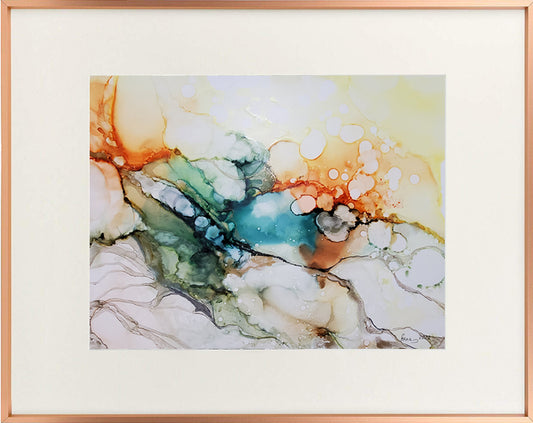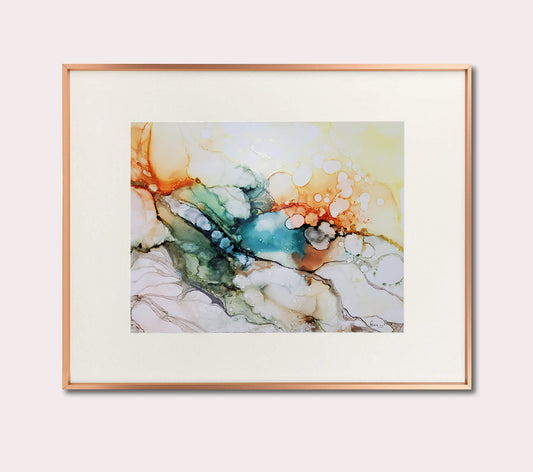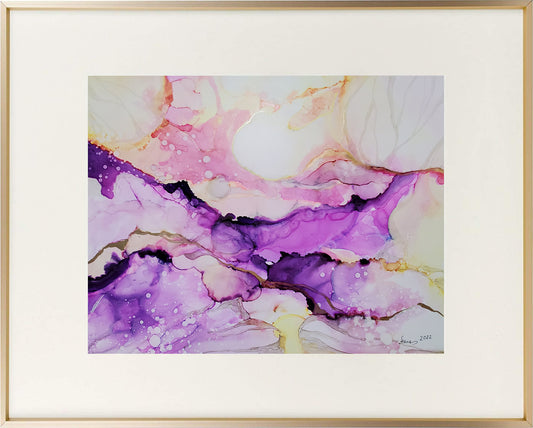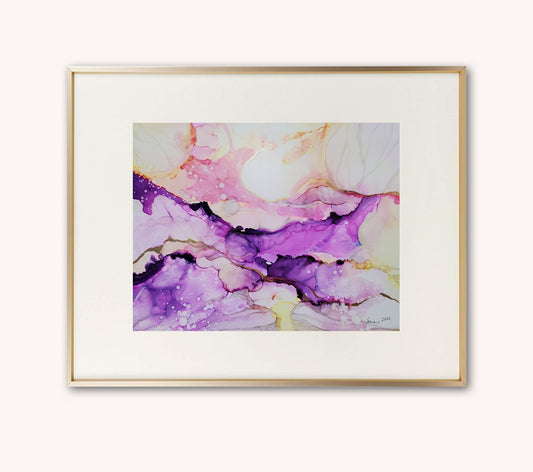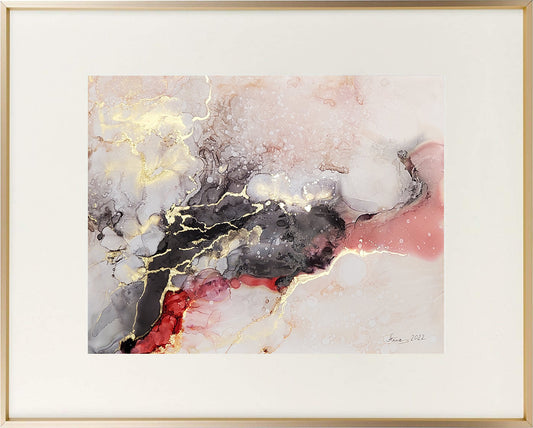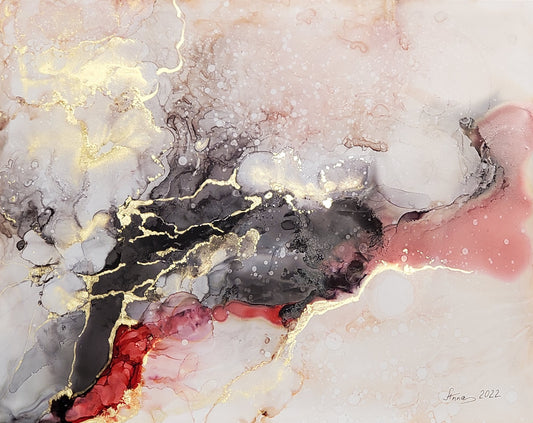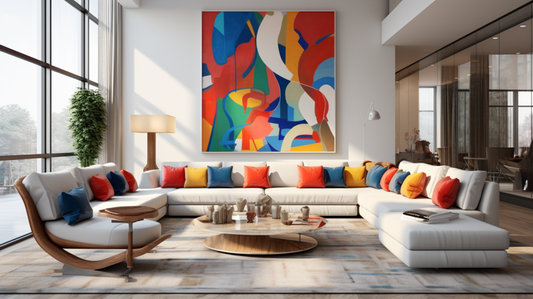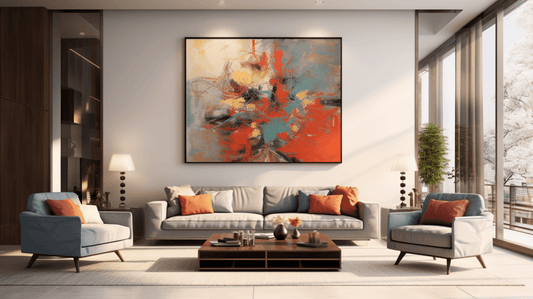
Theo van Doesburg Counter-Composition V (1924)
Abstract art, as a unique form of visual expression, stands in contrast to traditional art by not seeking to accurately depict the visual reality. Instead, it relies on shapes, colors, forms, and gestural marks to evoke a specific impact. The beauty of abstract art lies in its ability to be a departure from reality, a conduit for the artist's inner world, and a means to communicate universal truths and emotions. However, the meanings behind abstract art can be elusive, leaving viewers with questions about interpretation. This article aims to explore the symbolism and messages that abstract artists embed in their creations and delve into the historical evolution of abstract art.
The Meaning of Abstract Art Abstract art lacks a fixed or definitive meaning, unlike its figurative or representational counterparts that depict recognizable objects or scenes. Instead, abstract art offers a canvas for personal interpretation and imagination. The meaning of abstract art varies from one viewer to another, shaped by their individual experiences, preferences, and associations. Some may find abstract art perplexing or devoid of meaning, while others may discover profound inspiration.
However, abstract art is far from arbitrary or random. Abstract artists often incorporate symbols, metaphors, analogies, and associations to convey their ideas and emotions. These symbols draw from various sources, including nature, music, literature, religion, philosophy, psychology, and personal experiences. Some symbols are more apparent and universal, while others remain subtle or specific. To truly grasp the meaning of abstract art, it is essential to consider the artist's context, intention, style, technique, background, and history.
The History of Abstract Art Abstract art emerged as a prominent movement in the late 19th and early 20th centuries as a reaction to the dominance of realism and naturalism in the art world. While realism aimed to depict the visible world with precision, some artists felt constrained by these conventions. They began to experiment with subjective, expressive, and imaginative ways of representing reality, delving into emotions, sensations, thoughts, dreams, spirituality, and symbolism. These explorations were not bound by the rules of realism and naturalism, focusing instead on shape, form, color, line, texture, composition, and movement.
Prominent pioneers and innovators in abstract art include:
- Paul Cézanne (1839-1906), known for simplifying and distorting natural forms into geometric shapes and planes.
- Wassily Kandinsky (1866-1944), who used colors and shapes to express musical sounds and emotions.
- Piet Mondrian (1872-1944), renowned for reducing reality to horizontal and vertical lines and primary colors.
- Kazimir Malevich (1878-1935), a creator of pure geometric forms and colors on white backgrounds.
- Pablo Picasso (1881-1973) and Georges Braque (1882-1963), pioneers of cubism, which fragmented and reassembled objects from multiple perspectives.
- Marcel Duchamp (1887-1968), who challenged conventional definitions of art by presenting everyday objects as ready-made artworks.
- Jackson Pollock (1912-1956), famed for his paint-dripping technique, creating dynamic patterns of movement and energy.
These artists represent a fraction of those who have enriched and diversified abstract art. Abstract art's influence extends into modern and contemporary art movements, including expressionism, surrealism, minimalism, pop art, op art, conceptual art, performance art, installation art, and digital art, among others.
The Examples of Abstract Art Countless examples of abstract art can be found in various museums, galleries, books, and websites. Here, we highlight some influential examples to illustrate the symbols and meanings that abstract artists convey in their works:
- The Starry Night (1889) by Vincent van Gogh: While not strictly abstract, this painting uses swirling shapes and colors to convey the artist's emotions and his vision of nature.
- Composition VII (1913) by Wassily Kandinsky: A pure abstraction, it uses various colors, shapes, lines, and forms to create a dynamic and harmonious composition.
- Broadway Boogie Woogie (1942-43) by Piet Mondrian: Reflecting the artist's admiration for the modern city and its culture, it showcases geometric compositions.
- Black Square (1915) by Kazimir Malevich: This radical piece consists of a black square on a white background, symbolizing the rejection of previous artistic forms.
- Fountain (1917) by Marcel Duchamp: A ready-made sculpture challenging traditional notions of art and aesthetics.
- Number 1A (1948) by Jackson Pollock: Known for his drip technique, this painting reflects spontaneity, movement, and psychological depth.
The Styles and Techniques of Abstract Art Abstract art encompasses a wide range of styles and techniques, varying according to the artist's preferences and intentions. Some common styles and techniques include:
- Geometric abstraction: Utilizes geometric shapes and forms to create compositions based on order, logic, harmony, symmetry, or contrast.
- Lyrical abstraction: Relies on colors, shapes, lines, and forms to create compositions rooted in emotion, intuition, mood, atmosphere, or music.
- Biomorphism: Draws inspiration from nature and living organisms, using organic shapes to convey growth, transformation, fluidity, or movement.
- Collage: Involves cutting, tearing, pasting, or assembling different materials or images to create new compositions based on juxtaposition, contrast, or association.
- Assemblage: Combines different objects or materials to create sculptures or installations, exploring construction, deconstruction, or interaction.
The Emotions and Inspiration of Abstract Art Abstract art has the capacity to evoke a wide range of emotions and inspiration for both artists and viewers, including:
- Curiosity: Stimulating curiosity by inviting viewers to explore aspects of reality beyond the visible.
- Wonder: Inspiring wonder by offering new possibilities and perspectives beyond the ordinary.
- Joy: Eliciting joy through the use of bright colors, playful shapes, and cheerful motifs.
- Sadness: Expressing sadness through dark colors, somber shapes, or melancholic themes.
- Anger: Communicating anger with intense colors, sharp shapes, or aggressive gestures.
- Fear: Evoking fear with distorted shapes, chaotic forms, or ominous symbols.
- Peace: Creating a sense of peace through calm colors, smooth shapes, or harmonious compositions.
- Love: Conveying love with warm colors, soft shapes, or romantic motifs.
The Expression and Communication of Abstract Art Abstract art serves as a versatile form of expression and communication, transcending the limitations of language, culture, and time. It can:
- Express the artist's personal and subjective feelings and thoughts.
- Communicate universal and objective truths and emotions of humanity.
- Challenge conventional norms and values of society.
- Explore the complex and diverse aspects of reality.
- Inspire the creative and imaginative potential of the viewer.
In conclusion, abstract art is not a mere enigma to be deciphered but an opportunity and invitation to be experienced. It is an art form rich in symbolism within abstraction, offering endless avenues for exploration and interpretation.
Intrigued by the fascinating world of abstract art? Your artistic journey doesn't have to end here. Explore a mesmerizing collection of captivating and modern abstract artworks by visiting our Abstract Art Collection and Shop. Anna Manukyan's gallery is a treasure trove of creativity, where you can not only see but also acquire unique pieces that resonate with your aesthetic sensibilities. Dive into a realm of imagination, emotion, and innovation as you discover the transformative power of abstract art. Don't miss the opportunity to enrich your surroundings with these thought-provoking creations. Start your exploration now and let the art on this page inspire your soul.

